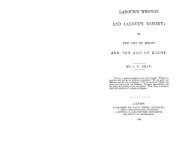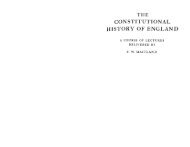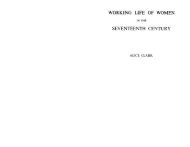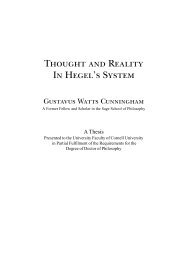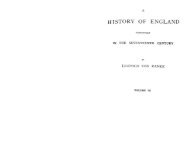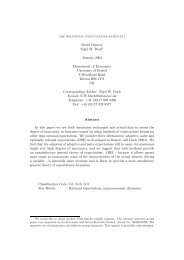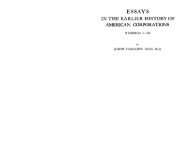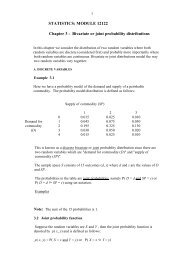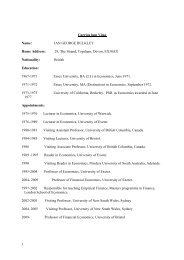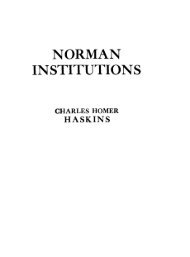Dummy Variables and Omitted Variable Bias
Dummy Variables and Omitted Variable Bias
Dummy Variables and Omitted Variable Bias
- No tags were found...
You also want an ePaper? Increase the reach of your titles
YUMPU automatically turns print PDFs into web optimized ePapers that Google loves.
2. <strong>Omitted</strong> <strong>Variable</strong> <strong>Bias</strong>So far we have assumed that the linear regression model is the correct specification of therelationship between the dependent <strong>and</strong> the explanatory variables. But suppose it is not.If it is not the correct specification, the model is then termed “mis-specified”. There arenumber of kinds of mis-specification <strong>and</strong> each kind has different consequences forestimation <strong>and</strong> hypothesis testing. Here we will deal with one of the most commonkinds; the omission of an explanatory variable.The linear regression model can, of course, contain a number of explanatory variables.The number is limited by the number of observations. In general, the number ofobservations should be several times greater than the number of explanatory variables.Nevertheless, it is still possible for an explanatory variable to be omitted either becauseits influence on the dependent variable is unknown or because it is difficult or impossibleto find data on such a variable. We are interested in the consequences for the leastsquares estimators of this omission.We will take the simplest possible case. Suppose the true model is;y t =a 1 x t + 2 z ta + u tt=1,2,… T (2)where u t is an unobserved r<strong>and</strong>om variable, E( ut⏐x t , z t ) = 0.However for whatever reason the second explanatory variable z t is omitted <strong>and</strong> theeconometrician assumes that the correct model is;y t =a 1 x t + u tt=1,2,… T (3)The least squares estimate of a 1 will beâ 1 =∑ x y∑ xt t2t(4)What are the properties of â 1?As before (see Notes 3), we take the expression for â 1 (4) <strong>and</strong> substitute for y t . On thisoccasion we substitute not from the false model (3), but from the true model (2). Thusâ 1 =∑ x (a x + a z + ut1t∑ x2 t t2t)= a 1 +a ∑ x z2∑ xt t2t+∑ x u∑ xt t2t(5)We now wish to examine whether â 1 is biased or unbiased. To do this we takeexpectations of (5).⎛E( â 1 ) = E( a 1 ) + E⎜a2∑x z⎝ ∑ xt t2t⎞ ⎛⎟ + E⎜∑x tu2⎠ ⎝ ∑ x tt⎞⎟⎠4



